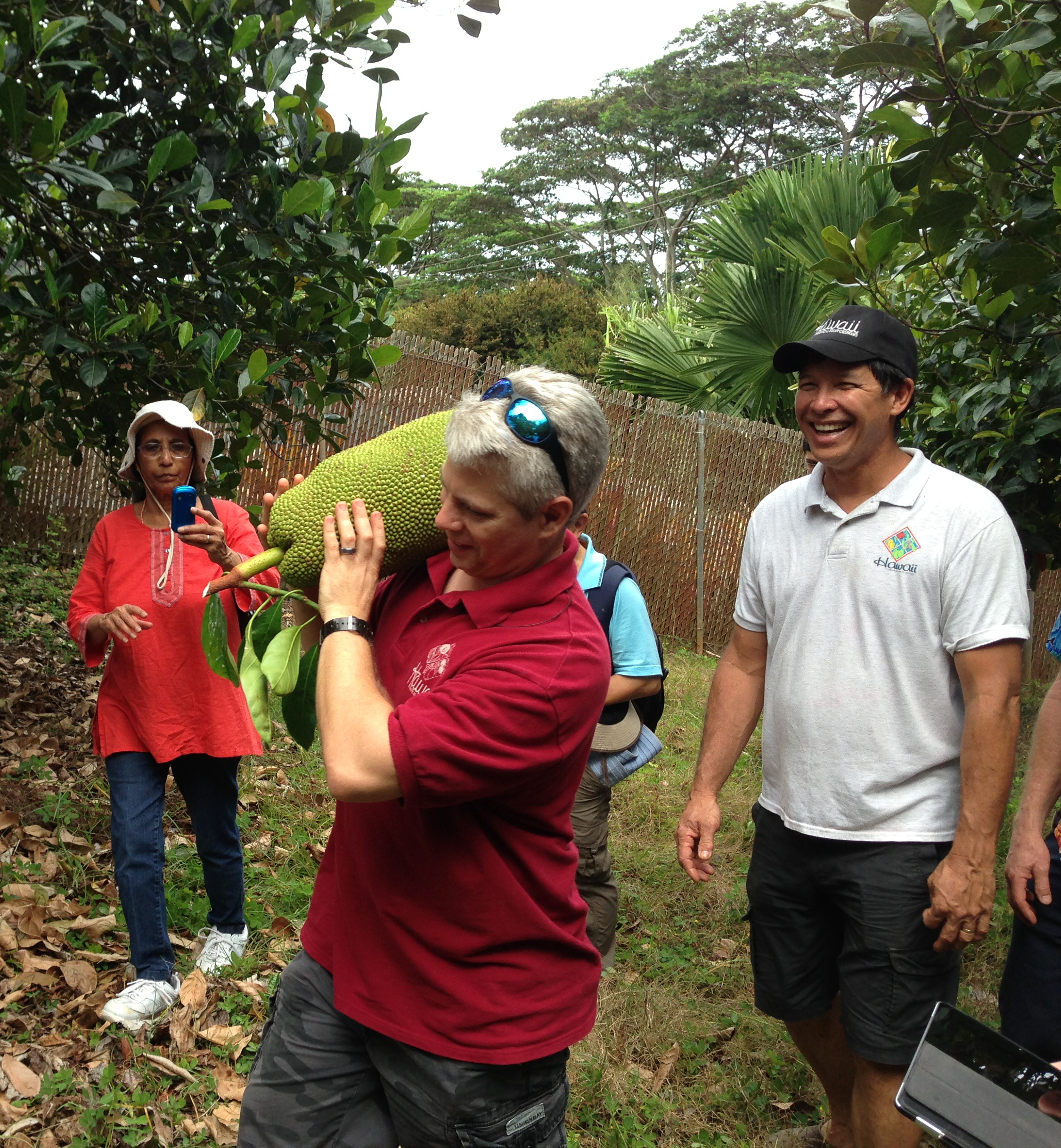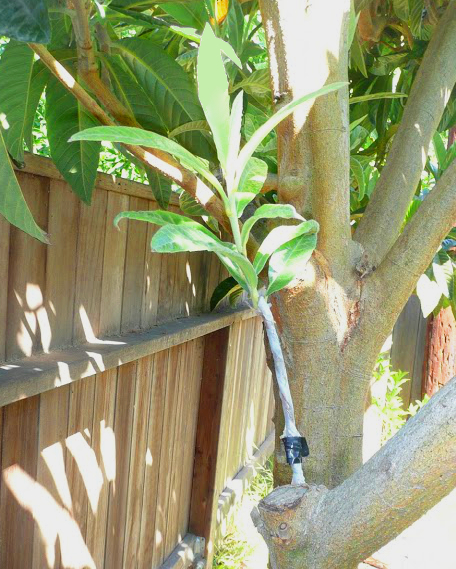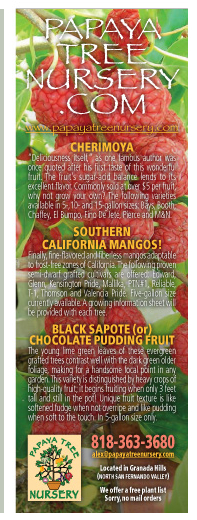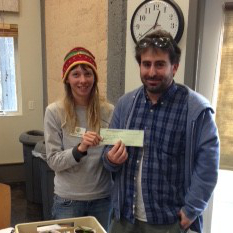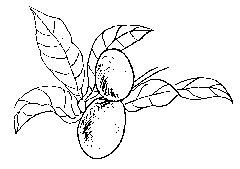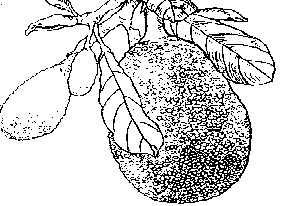The information here was taken from an article by John M. Riley that appeared in the 1978 CRFG Yearbook (vol. 10, pp. 57-62).
Getting Started
Listed below are some basic concepts and techniques in wine making. Prospective home vintners might also find it useful to consult a book on the subject, particularly a book with good illustrations and step-by-step instructions.
Wine making is gardening of a sort. Selected yeasts are the seed. They need nutrients in the form of sugar and all the elements associated with life. As in gardening, the selection of good seed ensures a good wine. Wild yeasts are found on almost all fruit, but these generally produce a wine which is inferior in flavor and of a lower alcohol content than wines produced by select strains of yeast. Good wine yeasts costing no more than a package of flower seed will provide a variety of controlled flavors and 16-20% alcohol. Baker’s yeast will give a “beery” taste and low alcohol content, but could be used in a first attempt at raisin jack or apple cider.
Just as there are weeds in the garden, so there are weeds in wines. There are microorganisms the feed on alcohol and cause a poor flavor. Vinegar bacilli will change sugar to vinegar. Molds give a stale flavor. To prevent these unwelcome intruders, cleanliness is the only answer. An effective agent is sal soda (sodium carbonate). This is inexpensive and does not contribute a taste of its own. Baking soda is fairly effective if given time to work. Either of these agents will remove odors and flavors from the containers. If soap or detergents are used, the containers must be carefully rinsed. Even the slightest trace will be apparent in the taste of a light wine.
A second means of ensuring that the wine yeast dominates the brew is to start a culture into vigorous growth a few days ahead of the fermentation of the must (the fruit pulp and syrup). By this means the selected yeast will have such a head start that it will consume the sugar and render the wine antiseptic before any unwanted organism can gain a foothold.
The procedure for preparing yeast starter is simple: Boil together 1/2 cup (~120 ml) fruit juice, 4 tablespoons (~60 ml) sugar, 1-1/2 cups (~360 ml) water and a pinch of yeast nutrient for three minutes to sterilize. Pour into a sterilized container. When the temperature has fallen to near room temperature, add the wine yeast. Cover the container so that the carbon dioxide can escape. For example, a sheet of plastic wrap held in place with a rubber band lets the gasses escape, but keeps out unwanted organisms. The mixture will turn cloudy and smell yeasty within a few days, at which time it is ready to use.
Fermentation and Bottling
In order to brew a gallon of wine it is desirable to have a primary fermentation container that will hold about three gallons of must. Never use metals for storage or fermentation of wine components. Following the recipes for various fruit wines, fill the plastic container with fruit pulp and liquid. At this time the fruit will contain a variety of organisms ready to grow. Sterilize the mixture by adding Campden tablets which consist of meta-bisulfite which releases sulfur dioxide when wet. The sulfur in addition to sterilizing, reduces oxidation and helps maintain the color of the wine. After about 24 hours the sulfur is recombined and contributes no flavor of its own. Then add the yeast starter and cover the plastic pail and must. Stir the fermenting must daily to distribute the fruit pulp evenly. The open fermentation and exposure to air helps establish a vigorous growth of yeast. After 6 or 7 days of open fermentation, strain the must through a sieve or cheese cloth and fill the primary fermentation container.
The primary fermentor most often used by the home wine maker is a glass gallon jug. This maybe readily sterilized and examined to check progress. An airlock is used to keep out unwanted air. These are usually made of plastic and consist of an inverted cup over a stem. The combination holds enough water so that carbon dioxide may escape by bubbling through the water. When the yeast is deprived of oxygen, it changes its method of growth, producing much more alcohol. New wine bubbling merrily in the jug is a beautiful sight. Fermentation will slow as the sugar is consumed and in two or three weeks will be essentially complete. It is not time to rack or bottle the wine.
The process of bottling wine can be given the dignity it deserves by the use of special wine bottles, corks and even foil and labels. However, you can just as well use soft drink bottles which have a screw top. Be sure the bottles are clean and free from odor or contaminants. Siphon the new wine into the bottles to minimize exposure to the air. Fill the bottle to the top. There will be a considerable sediment (lees) composed of yeast and residual particles of fruit at the bottom of the fermenter. Do not siphon too close to this sediment for this will develop off flavors if allowed to age with the wine. Let the wine age for about three months in a moderately cool and dark place. Rebottle the wine once again, avoiding the small amount of sediment sure to be present. Add 2 Campden tables per gallon of wine to sterilize and then seal the bottles permanently. Some wines are pleasant immediately, but others require as long as a year before they develop a good character.
Very often wine is fermented to dryness, and sugar is added later in the form of syrup to sweeten the wine to the individual taste. If this process is used, add Campden tablets to stop the fermentation which otherwise may start up again. Sometimes this secondary fermentation is deliberately encouraged to coax a greater alcohol content.
Wine recipes
A “wine” of sorts can be made with approximately two pounds (.9 kg) of sugar, yeast, nutrient and water to make up a gallon (3.8 L). Fermentation reduces the sugar and creates alcohol. The addition of fruits provide the flavor and aroma. There is a temptation to process whole fruit in a food blender as a short cut rather than peel it. This can introduce unwanted strong flavors from the skin. Some of the better wines also make use of judicious amounts of aromatic herbs and spices as well as fruit.
The recipes offered here are general and intended to stimulate the imagination. There is a good opportunity to create very fine wines from fresh fruit in season and from canned “rare” fruits in ready supply. Be aware, however, that much imported canned tropical fruit is of low quality. Most have a metallic taste from the can. If at all possible use fruit in bottles or fruit syrups.
GENERAL RECIPE
2 lb fresh fruit or 20 oz canned fruit
2 lb sugar
1 teaspoon tannin
2 teaspoons citric acid
1 teaspoon yeast nutrient
wine yeast
water to 1 gallon liquid
If the fruit has a high pectin content (jells easily) it will be desirable to add 2 tablespoons of depectinizer to assist in breaking down the pulp. A mild flavored fruit may be used in greater quantities than one which has a strong flavor. There is nothing wrong with blends of compatible fruits, and indeed some of the best wines are blends. Bananas and raisins are particularly valuable since they give body to the wine without dominating the flavor.
RAISIN JACK
3 lb raisins
1 lb sugar
juice of 2 lemons
water to 1 gallon
The raisins should be chopped or ground in a food blender with the lemon juice. Heat the sugar and water to boiling to dissolve and pour over the raisins. If a cup of raisin pulp is held out until the water cools, it will likely supply the natural yeasts needed to start fermentation. Let ferment in a primary fermentor for 6 to 7 days. Strain off the sediment and place in a secondary fermentor with an airlock for 1 to 2 weeks. When the fermentation has ceased and the wine has cleared, put into bottles and seal.
This is nothing more than “Jungle Juice” of World War fame, but the product is generally liked and the wine can be sampled immediately. A really superior wine can be made using raisin in more sophisticated recipes with a good yeast.
PINEAPPLE WINE
2 cans sliced or crushed pineapple (20 oz total)
1 1/2 lb sugar
2 teaspoons citric acid
1/2 teaspoon tannin
1/2 teaspoon yeast nutrient
wine yeast
water to 1 gallon
Finely chop the pineapple or put through a blender to assist in extraction. Dissolve the sugar in 2 quarts of boiling water. Allow to cool to near room temperature and add pineapple, juice from the can, tannin and nutrient. Add sufficient water to bring the total volume to one gallon. Add yeast starter, ferment and bottle as described above.
MANDARIN ORANGE WINE
2 cans mandarin orange slices (20 oz total)
2 lb sugar
1/2 teaspoon citric acid
1 teaspoon yeast nutrient
wine yeast
water to 1 gallon
Crush or blend the orange segment with the juice in the cans. Dissolve the sugar in 2 quarts boiling water, add the citric acid, tannin and nutrient. Pour in the orange pulp and juice. Add water to make one gallon by volume. When the mixture is near room temperature, add yeast starter and ferment as described above.
PAPAYA WINE
2 cans papaya (20 oz total) or 2 lb. fresh fruit
2 lb sugar
2 teaspoons citric acid
1 teaspoon tannin
1 teaspoon yeast nutrient
2 tablespoons depectinizer
wine yeast
water to 1 gallon
Crush or blend the fruit saving the juice. Boil two quarts water with the sugar to make a syrup. Let cool to near room temperature and add tannin, citric acid, nutrient and depectinizer. Pour over the fruit pulp and juice. Add water to make one gallon by volume. Cover and store for one day at room temperature. This will allow the depectinizer to break down the fruit pulp and produce a better wine. Add the yeast starter and ferment as described above.
MANGO WINE
2 cans sliced mangos (20 oz total) or 2 lb. fresh fruit
2 lb. sugar
5 teaspoons citric acid
1 teaspoon tannin
2 tablespoons depectinizer
1 teaspoon yeast nutrient
wine yeast
water to 1 gallon
Prepare as for papaya wine. This makes a light golden table wine which is at its best as a dry wine.
Honey is especially good as a base for light wines with fruit flavors. The following recipes introduce the combination of honey and fruit in an ancient drink known as melomel.
GRAPEFRUIT MELOMEL
43 to 46 oz grapefruit juice (canned or fresh)
2 lb mixed wildflower honey
1 teaspoon yeast nutrient
1/2 oz tartaric acid
wine yeast
Dissolve the honey in 3 pints of water and add grapefruit juice, tartaric acid and nutrient. Add two Campden tablets and sufficient water to make up 1 gallon of mixture. After 24 hours introduce a yeast starter. Ferment as describe above. This melomel has the characteristic bite of grapefruit, but the flavor blends very well with honey.
LYCHEE MELOMEL
1 lb canned lychees
1 lb orange blossom honey
1 lb sugar
1/4 oz malic acid
1/2 teaspoon tannin
1 teaspoon yeast nutrient
sauternes yeast
water to 1 gallon
Dissolve the sugar and honey in 6 pints of water. Add lychees, nutrient, malic acid and tannin to make one gallon. Add two Campden tablets. After 24 hours add yeast starter to the pulp. Ferment three days. Strain off lychees and continue fermentation to dryness. Continue as described above.
Approximate metric unit conversion
1 lb = 0.45 kg
1 oz = 28 g
1 teaspoon = 5 ml
1 tablespoon = 15 ml
1 oz (fluid) = 30 ml
1 cup = 236 ml
1 pint = 473 ml
1 gallon = 3.8 L

